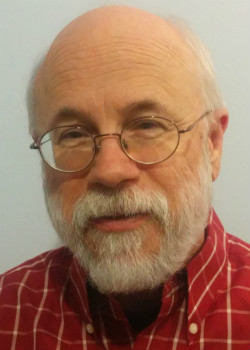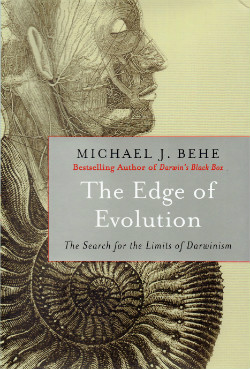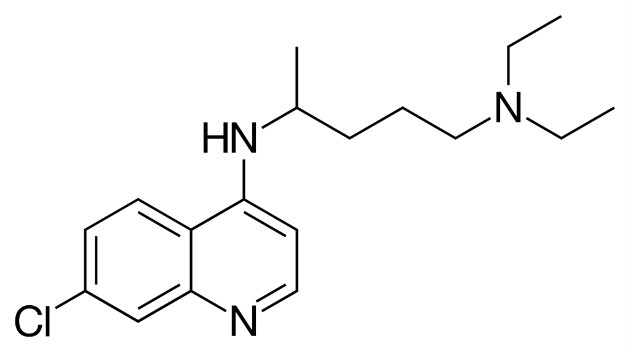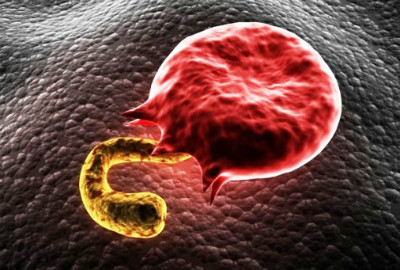Michael Behe on the Limits of Evolution
 This article is from Michael Behe PhD, Professor of Biochemistry at Lehigh University, PA, USA. You may recall that The Centre for Intelligent design (C4ID) sponsored a UK lecture tour for Prof Behe in 2010 which attracted a total audience of almost 3,000. His book Darwin’s Black Box (1996), describing ‘irreducible complexity’ in biology, is an iconic work of the Intelligent Design (ID) movement. His second book The Edge of Evolution (2007) argues from empirical data that the development of life as we know it is well beyond the capacity of random mutations to achieve, as argued in classical Neo-Darwinism.
This article is from Michael Behe PhD, Professor of Biochemistry at Lehigh University, PA, USA. You may recall that The Centre for Intelligent design (C4ID) sponsored a UK lecture tour for Prof Behe in 2010 which attracted a total audience of almost 3,000. His book Darwin’s Black Box (1996), describing ‘irreducible complexity’ in biology, is an iconic work of the Intelligent Design (ID) movement. His second book The Edge of Evolution (2007) argues from empirical data that the development of life as we know it is well beyond the capacity of random mutations to achieve, as argued in classical Neo-Darwinism.
One of Behe’s crucial inferences in that second book, from studies of antibiotic resistance in malaria, concerns the limitations of random mutations for generating novel features. His conclusion has recently been experimentally verified. We believe this is a striking example of how Intelligent Design is a fruitful paradigm for research and that, as a scientific proposition, it makes falsifiable predictions. In this case ID has made a correct inference. A bibliography of recent comment on this subject in Evolution News and Views is posted below [2]
We also think that the wider implications of Behe’s work on the limitations of random mutations are devastating for the current Neo-Darwinian consensus. We are delighted to circulate this essay which is written for a lay audience.
Evolution’s Lottery [1]
Evolution is like the National Lottery — a lot of people buy tickets, and almost everyone loses.
Imagine a weekly lottery game where a card has eight windows, each with a flap covering a single digit from zero to nine. If, when revealed, all the digits match each other (ten ways to win!) the player receives £1,000,000. It would be very unlikely that anyone in a village of a thousand would win even if all the people played, because the chances of eight random digits matching each other are one in ten million. In fact, all the people in the village would have to play the game over and over again for centuries before anyone there would be expected to win. Yet if everyone in the whole of Britain played, we’d expect about a half-dozen winners each week, because there would be many more chances for someone to have a winning ticket.

Simon and Schuster 1996
Now think of a super lottery, where the prize is £1,000,000,000,000 — more than the national budget. In order to win this game, a player has to buy two eight-window tickets, and, as before, the numbers on both tickets have to match each other. How long would it take for a player in Britain to win? If you do the arithmetic, it would take about 30,000 years for anyone at all to win. Most people would likely give up and play a different game.
The game of evolution depends on the same two factors as the National Lottery: the odds of winning and the number of players. But instead of matching numbers on a card, evolution has to match the right mutations to an organism’s DNA. As an example, consider one of the gravest threats to human health — malaria. The malaria parasite is a tiny single-cell organism that is transmitted by the bite of an infected mosquito. Once it enters a human, a malaria cell multiplies by eating her blood, which often kills the victim. For thousands of years humans have had little defence against the disease. In the past century, however, antibiotic drugs have been developed that kill malaria.

Free Press 2007
To understand the malaria evolution lottery, let’s look at two drugs. The first is called atovaquone. Atovaquone readily kills normal malaria cells — in a laboratory, adding the drug to a flask that contains millions of such cells will usually wipe them out. Yet if the drug is given to a person suffering from malaria, it often fails. Why? It turns out that, although malaria needs just one particular mutation in its DNA to gain resistance to atovaquone, the likelihood of the mutation occurring is about one in a hundred million cells. Since there are only a few million cells in the lab flask, the odds are poor that any of them will have the right mutation, so the drug kills them all. A person sick with malaria, however, can harbour up to a million million cells. Like the example above of the UK vs a single village, the greater numbers make the odds very good that one or more of those cells will have the winning ticket. So malaria seems to develop resistance easily in patients treated with atovaquone, even though the mutation itself is quite unlikely.

Chemical structure of Chlorquine
The second drug is called chloroquine. Instead of resistance appearing in every few patients as with atovaquone, new malarial resistance to chloroquine only appears once in about every hundred million patients. What could account for this astounding difference in frequency? In my 2007 book The Edge of Evolution I argued that the logic of the lottery example could easily explain it. If instead of one particular mutation, malarial resistance to chloroquine needed two particular mutations to occur in the same cell, the likelihood of getting them both would be drastically less than getting an individual mutation. Instead of one in a hundred million, resistance would appear in only one of every ten thousand million million. Since that astronomical number is much greater than the number of malaria cells in a single patient, almost all patients would be cured by chloroquine. (Regrettably, in the very large number of patients on earth who become sick, there are enough malaria cells to yield a few that do have resistance to chloroquine. The growth of those few and their dissemination by mosquitoes have caused chloroquine resistance to become common.)

The malarial parasite attacks red blood cells
Recent scientific results have confirmed that at least two mutations are indeed needed for chloroquine resistance, as I predicted. This teaches us several important lessons about evolution, one practical and one theoretical. The practical lesson is that disease microbes like malaria can be stopped if we find a drug or combination of drugs that would require multiple mutations to overcome them. Evolution isn’t the relentless force that Darwinists have often portrayed — there exists an edge beyond which it becomes helpless, as intelligent design proponents expected.
The theoretical lesson is that, just as with battling microbes, we should expect there to be an edge to random evolution in the history of life, too. Yes, chance mutations plus natural selection do explain some features of biology. But if even several mutations were needed together to produce some complex organ or feature of life, it becomes much less likely that unguided natural processes explain it.
Do many features of life require multiple mutations? Almost all functional ones do. The basic machines of life are constructed of molecules called proteins, and proteins themselves are typically made of hundreds of units of amino acids joined together. Those machines, under the guidance of complex instructions encoded in an organism’s DNA, build the plants and animals we know. At some point in the history of life each of those amino acids in each of the protein machines had to have been new — a mutation. So virtually all proteins, as well as the complex instruction sets controlling them, are beyond the edge of random evolution.
What’s more, although tiny organisms such as malaria have the huge population numbers to allow them to overcome small evolutionary roadblocks such as presented by chloroquine, larger organisms don’t. Larger organisms are unlikely to win an evolutionary lottery at all if it needs just two or more mutations. The conclusion is that very little of what we see in life can be the result of the random processes invoked by Darwinian evolution. Rather, almost all features of life required purposeful intelligent design.
[1] Summers et al., ‘Diverse mutational pathways converge on saturable chloroquine transport via the malaria parasite's chloroquine resistance transporter,’ Proceedings of the National Academy of Sciences USA, Vol. 111: E1759-E1767 (April 29, 2014). See also several articles in ‘Evolution News and Views’ on the subject in July 2014 at http://www.evolutionnews.org .
[2] A Key Inference of The Edge of Evolution Has Now Been Experimentally Confirmed
Michael Behe July 14, 2014 4:46 AM
http://www.evolutionnews.org/2014/07/a_key_inference087761.html
It's Tough to Make Predictions, Especially About the Future
Michael Behe July 16, 2014 5:40 AM
http://www.evolutionnews.org/2014/07/its_tough_to_m2087891.html
So, Michael Behe Was Right After All; What Will the Critics Say Now?
Casey Luskin July 16, 2014 1:30 PM
http://www.evolutionnews.org/2014/07/so_michael_behe087901.html
The Edge of Evolution: Why Darwin's Mechanism Is Self-Limiting
Michael Behe July 18, 2014 1:04 PM
http://www.evolutionnews.org/2014/07/the_edge_of_evo087971.html
An Open Letter to Kenneth Miller and PZ Myers
Michael Behe July 21, 2014 2:27 PM
http://www.evolutionnews.org/2014/07/show_me_the_num088041.html
A Pretty Sharp Edge: Reflecting on Michael Behe's Vindication
Ann Gauger July 28, 2014 3:59 AM
http://www.evolutionnews.org/2014/07/a_pretty_sharp088281.html
Image credits:
Thumbnail - © Michael Behe
Michael Behe and his book covers - © Michael Behe
Chemical structure - public domain
Blood cell - courtesy RAJ CREATIONZS / Shutterstock